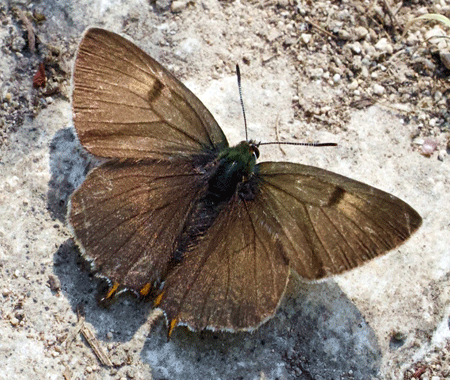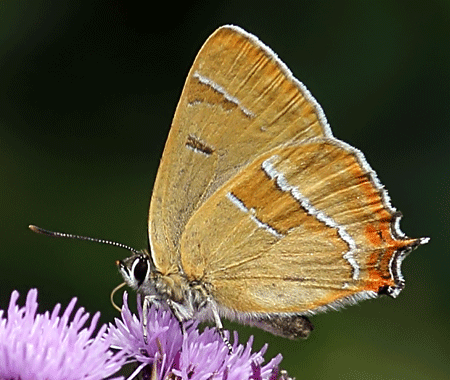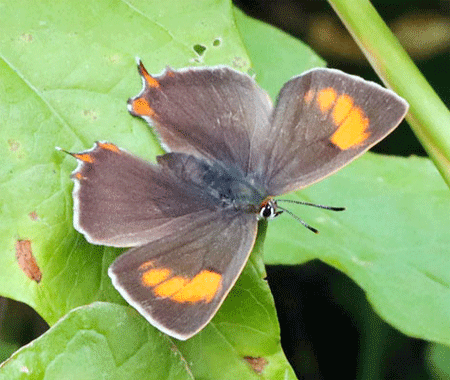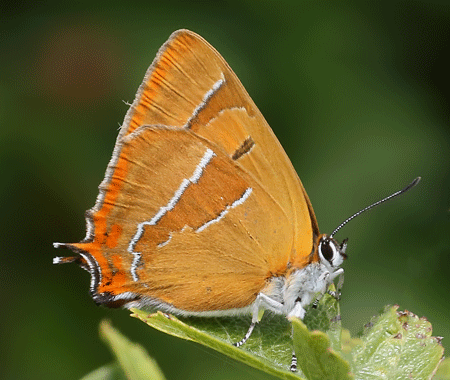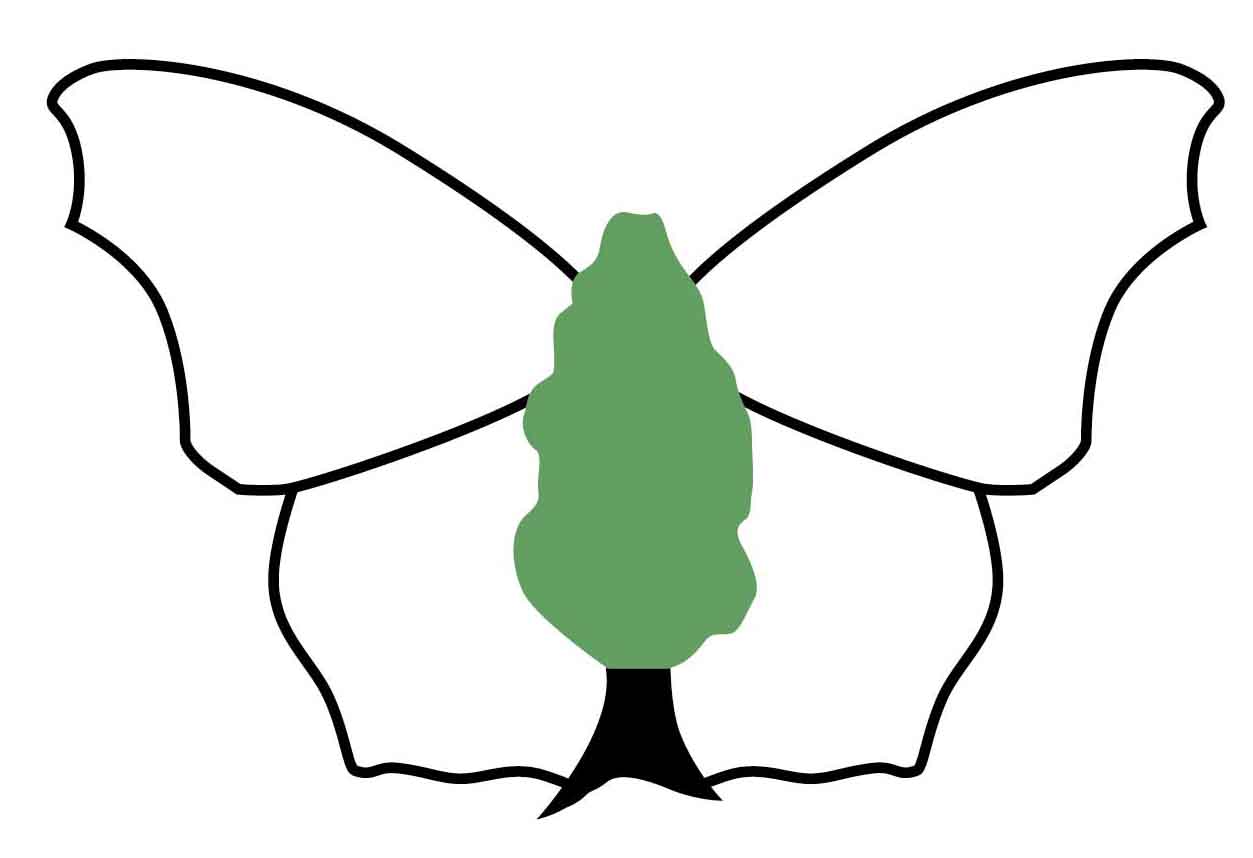 | Butterfly Conservation Saving butterflies, moths and our environment | Upper Thames Branch | 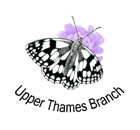 |
Brown Hairstreak (Thecla betulae) | |||||||||||||||||||||
| Description | |||||||||||||||||||||
| Wing span: 37-44 mm. The Brown Hairstreak is the largest hairstreak found in the British Isles. It is a local species that lives in self-contained colonies that breed in the same area year after year. This species can prove elusive, since adults spend much of their time resting and basking high up in tall shrubs and trees. The female has orange patches on her upper wings, and has generally brighter under-wings. Both sexes will show their top surfaces, but they mostly keep their wings closed when feeding. It is found in the southern half of England and Wales. It favours areas with extensive networks of hedges and woodland, often on heavy clay soils on low-lying land. | |||||||||||||||||||||
| Images (click to enlarge) | |||||||||||||||||||||
| |||||||||||||||||||||
| Life Cycle | |||||||||||||||||||||
| There is one generation each year. This is the latest species to emerge in Britain, with adults being on the wing from late July to early September. The ovum is the over-wintering stage. | |||||||||||||||||||||
| Larval Foodplants | |||||||||||||||||||||
| The primary larval foodplant is Blackthorn (Prunus spinosa). | |||||||||||||||||||||
| Nectar Sources | |||||||||||||||||||||
| Adults feed primarily on aphid honeydew. | |||||||||||||||||||||
| UK Conservation Status | |||||||||||||||||||||
| Vulnerable | |||||||||||||||||||||
| Earliest UTB first sighting (since 2004) : 8th July | |||||||||||||||||||||
| Mean UTB first sighting (since 2004) : 22nd July | |||||||||||||||||||||
| Species Champion | |||||||||||||||||||||
| Dave Wilton Email: brown-hairstreak@upperthames-butterflies.upperthames-butterflies.org.uk | |||||||||||||||||||||
| Reports | |||||||||||||||||||||
| Distribution and Sites | |||||||||||||||||||||
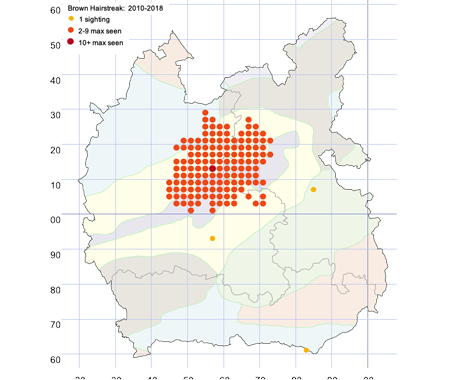 Key |
| ||||||||||||||||||||
| Related Species | |||||||||||||||||||||
| |||||||||||||||||||||
Copyright © Butterfly Conservation Upper Thames Branch 2025
Privacy and Copyright Statement
Butterfly Conservation : Company limited by guarantee, registered in England (2206468)
Registered Office: Manor Yard, East Lulworth, Wareham, Dorset, BH20 5QP, Tel: 01929 400 209
Charity registered in England & Wales (254937) and in Scotland (SCO39268)
Privacy and Copyright Statement
Butterfly Conservation : Company limited by guarantee, registered in England (2206468)
Registered Office: Manor Yard, East Lulworth, Wareham, Dorset, BH20 5QP, Tel: 01929 400 209
Charity registered in England & Wales (254937) and in Scotland (SCO39268)

